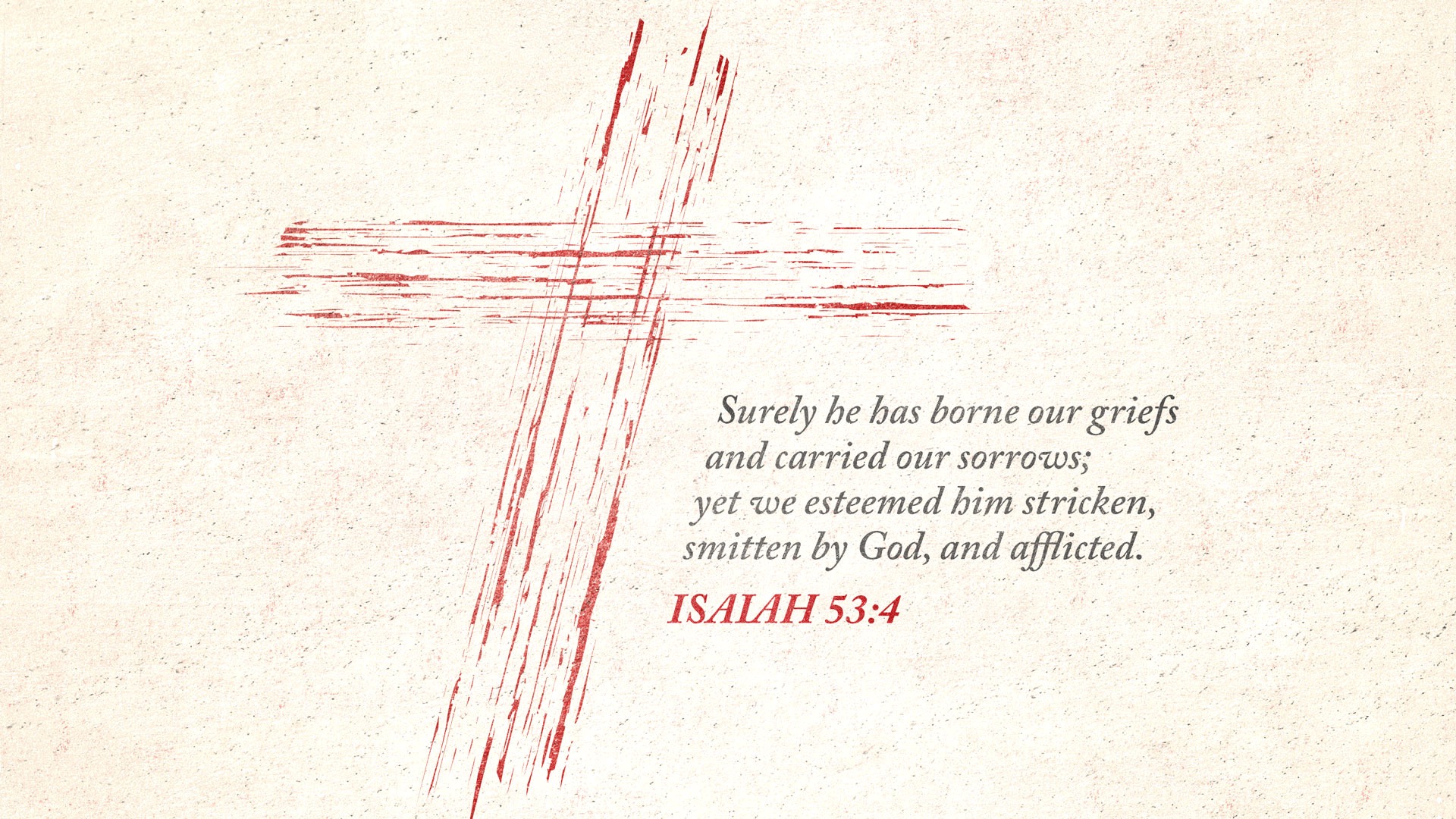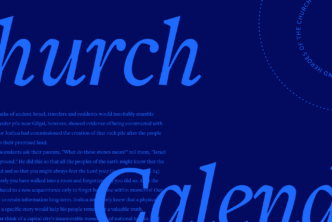We see it sometimes when a baseball player steps up to the plate or when a worshipper in a liturgical church approaches the altar. It’s the sign of the cross, traced on the forehead, shoulders, and chest. In the West, the motion goes: up, down, left, right. In the East: up, down, right, left.
But what does it mean when someone makes the sign of the cross? Is the sign intended as a blessing? For protection? Or perhaps as a testimony? Where did the custom come from? And why do some Christians make the sign of the cross, while many others do not?
Let’s take a closer look.

Origins
Signs figure prominently in Christian faith and practice—and in the Bible. All kinds of signs. We remember the sign of the blood on Hebrew doorposts in Egypt (Exod 12:7) and the sign of the scarlet thread out Rahab’s window at Jericho (Josh 2:18). The sign of circumcision is mentioned in Genesis 17:1–14 and elsewhere. Even baptism and the Lord’s supper are signs, though of a different sort. And the Bible says “let this be a sign to you” (Luke 2:12).
So physical symbols—signs—are reminders of truths God wants us to live by. And even though the first Christian believers likely associated the cross with rather horrific images (it was, after all, an instrument of torture and death), still the apostle Paul wrote that he would never boast “except in the cross of our Lord Jesus Christ” (Gal 6:14). That’s quite a sign!
After Paul’s time, it wasn’t long before early church fathers like Tertullian (c. AD 155–220) urged Christian believers to build the simple but meaningful sign of the cross into their everyday experience: “At every forward step and movement,” he wrote, “at every going in and out, when we put on our clothes and shoes, when we bathe, when we sit at table, when we light the lamps, on couch, on seat, in all the ordinary actions of daily life, we trace upon the forehead the sign.”1
A century later, Cyril of Jerusalem (AD 313–386) shared a similar view: “Let us, therefore, not be ashamed of the Cross of Christ; but though another hide it, do thou openly seal it upon thy forehead, that the devils may behold the royal sign and flee trembling far away. Make then this sign at eating and drinking, at sitting, at lying down, at rising up, at speaking, at walking. In a word, at every act.”2
For both Tertullian and Cyril, the sign of the cross was something to be imprinted on everything they did, whether in private or public. This practice was a way to consecrate even the most menial tasks like putting on shoes, to the glory of God (cf. 1 Cor 10:31). It was like saying “all I am and all I have belongs to Christ.”
In these early examples, the sign of the cross was a small symbol etched on the forehead, most likely by the thumb. For early Christians, this was connected in their minds with “the mark of God on the forehead” which set the faithful apart from idolaters (cf. Ezek 9:4; Rev 9:4). The sign of the cross was thus a public-facing profession of faith in the Crucified One. It declared to both the world and the devils that this person was “marked” as Christ’s own.
The earliest record of the modern, larger version of the sign of the cross that touches the forehead, chest, and then the shoulders appears in the fifth century. It’s not clear what prompted the change. But it quickly became the standard way to make the sign.
What does the sign of the cross mean?
The sign of the cross can be seen as an embodied spiritual practice, a way to enter into prayer with more than just intellectual assent, but with one’s entire heart, soul, mind, and strength (Deut 6:5). It’s a public demonstration of the believer’s commitment to Christ’s finished work. And making the sign is often explained as a complete trinitarian prayer in itself, a physical affirmation of the triune God: in the name of the Father, Son, and Holy Spirit. Catholic theologian Romano Guardini (1885–1968) wrote:
It is the sign of the universe and the sign of our redemption. On the cross Christ redeemed mankind. By the cross he sanctifies man to the last shred and fiber of his being. We make the sign of the cross before we pray to collect and compose ourselves and to fix our minds and hearts and wills upon God. We make it when we finish praying in order that we may hold fast the gift we have received from God. In temptations we sign ourselves to be strengthened; in dangers, to be protected. The cross is signed upon us in blessings in order that the fullness of God’s life may flow into the soul and fructify and sanctify us wholly.3
An emotional connection
For Elizabeth Ann Seton (1774–1821), an American who turned to Catholicism after her husband died, making the sign of the cross was an emotional connection to the Lord. In a letter to her sister, she described her experience with a family friend and the sign of the cross this way:
This evening standing by the window, the moon shining full on Filicchi’s countenance, he raised his eyes to heaven and showed me how to make the sign of the cross. Dearest Rebecca, I was cold with the awful impression my first making it gave me. The sign of the cross of Christ on me. Deepest thoughts came with it of I know not what earnest desires to be closely united with him who died on it.4
How and when is the sign of the cross made?
In the East, the sign is made by pressing together the first three fingers of the right hand (including the thumb), while the shortest two fingers are folded into the palm. The three fingers are a symbol-reminder of the Trinity. And the other two fingers remind of us of Christ’s dual nature as God and man.
In the West, particularly among Catholics, the hand makes the sign while being open and turned upward, in a gesture of openness to God’s gifts.
The sign is then traced from the forehead (the mind and will) to the center of the chest (the heart), then from left shoulder to right shoulder. Eastern Orthodox believers reverse the last part, moving from right shoulder to left.
Clearly, there is no single way to make the sign. You can adopt various forms depending on which has significance for you.
Why is the right hand used to trace the cross, and not the left? Other than the fact that perhaps 90 percent of the population is right-handed, the right hand has traditionally been used for blessing, for handshakes, and for salutes. In Scripture, Christ is said to be seated at “the right hand” of the Father (Matt 26:64, among other verses). So the right hand is deeply embedded in our culture and traditions. And in any case the sign of the cross should be made thoughtfully. Guardini writes:
When we cross ourselves, let it be with a real sign of the cross. Instead of a small cramped gesture that gives no notion of its meaning, let us make a large unhurried sign, from forehead to breast, from shoulder to shoulder, consciously feeling how it includes the whole of us, our thoughts, our attitudes, our body and soul, every part of us at once, how it consecrates and sanctifies us.
Think of these things when you make the sign of the cross. It is the holiest of all signs. Make a large cross, taking time, thinking what you do. Let it take in your whole being—body, soul, mind, will, thoughts, feelings, your doing and not-doing—and by signing it with the cross strengthen and consecrate the whole in the strength of Christ, in the name of the triune God.5
Why don’t Protestants make the sign of the cross?
Actually, they do—or some do—particularly in the Lutheran and Anglican traditions. In his Small Catechism, Luther himself urged his followers to make the sign of the cross before morning and evening prayers:
In the morning when you wake up, make the sign of the holy cross and say: In the name of the Father and of the Son and of the Holy Spirit. Amen. Likewise, in the evening when you go to bed, make the sign of the holy cross and say: In the name of the Father and of the Son and of the Holy Spirit. Amen.6
Even today, most Lutherans are quite used to seeing their worship leaders make the sign of the cross during services—though usually facing outwardly at the congregation, rather than on the leader’s own body.7
Anglican traditions may also include the sign of the cross, particularly during family prayers or before communion, as well as during the confession and repentance portions of the liturgy. Anglican Fr. Steve Abbott said that for Anglicans, it’s a way of “praying with your hands.”
Methodists often draw the sign of the cross on foreheads to commemorate Ash Wednesday, and worship leaders sometimes make the sign of the cross at the end of services, blessing the congregation. It has also been used during baptism ceremonies.8
A difference of opinion
We seldom see the sign of the cross outside the more liturgical traditions, however, and some of the reasons stretch back to Reformation days. Most Protestant Reformers in the 1500s and 1600s distanced themselves from all things Catholic, including that church’s ceremonies and outward signs.
Some Protestant Reformers also held to sola Scriptura, or “Scripture alone,” as a key tenet of faith and practice. And since there is no literal command anywhere in the Bible to trace the sign of the cross (unlike the directives to baptize or to celebrate communion), that practice was dropped early on from many forms of Protestant worship.
Had early church father Tertullian been alive at the time of the Protestant Reformation, however, he may have argued the point. “If for these, and other such rules, you insist upon having positive Scripture injunction,” he wrote, “you will find none. Tradition will be held forth to you as the originator of them, custom as their strengthener, and faith as their observer.”9
But rejection of the sign of the cross, according to one modern observer, was “a good example of throwing out the baby with the bathwater.”10
The conversation continues
So should Protestants feel free to cross themselves when they pray?
Some might argue that making the sign of the cross is simply a way of reconnecting with historical Christian tradition. As Orthodox blogger Robert Arakaki put it, “The sign of the cross enables one to rediscover the classic Christian worldview of creation as a sacrament and the Cross as the means by which the Devil is defeated, the Fall of humanity reversed, and the cosmos redeemed.”11
Yet some Protestants still wonder, and still shy away from the practice. Columnist Kate Hanch asked, “What would it look like for Baptists and other Protestants to recover and reclaim the old tradition of making the sign of the cross?”12
It’s a good question. But one thing is sure: Christians of differing traditions can share in the gift of reconciliation “in one body through the cross” (Eph 2:16). And despite lively differences of opinion, we can enjoy the freedom to pray with our hands through this sign—or not.
***
Want to learn more? For a closer look at many of the most essential Christian teachings, check out the Crucial Questions Series from renowned pastor and theologian R. C. Sproul. In this free resource from Logos, you’ll discover succinct yet comprehensive studies on biblical topics like the Trinity, the Holy Spirit, and baptism, as well as everyday concerns like dealing with guilt or experiencing joy.
Or download the feature-packed Logos free edition—a powerful Bible study app for all your devices that will help you peel back the layers of the Scripture and grow in your understanding of God’s Word.
- Tertullian of Carthage, De Corona, in Ante-Nicene Fathers, eds. Alexander Roberts, James Donaldson, and A. Cleveland Coxe, trans. S. Thelwall (Buffalo: Christian Literature Publishing Co., 1885), 3:193.
- Cyril of Jerusalem, “Catechetical Lecture IV: On the Tens Points of Doctrine,” in vol. 7, Nicene and Post-Nicene Fathers, Second Series, eds. Philip Schaff and Henry Wace, trans. Edwin Hamilton Gifford (Buffalo: Christian Literature Publishing Co., 1894), 135.
- Romano Guardini, Sacred Signs (St. Louis: Pio Decimo Press, 1956), 14.
- Elizabeth Ann Seton, “Letter to her sister Rebecca (April 18, 1804),” in Collected Writings (Hyde Park: New City Press, 2000), 1:123.
- Guardini, Sacred Signs, 13–14.
- Martin Luther, Small Catechism (St. Louis: Concordia Publishing House, 1991).
- Here is a more detailed list of Lutheran references to the practice of making the sign of the cross.
- “Why Don’t We Make the Sign of the Cross?” People of the United Methodist Church, https://www.umc.org/en/content/ask-the-umc-why-dont-united-methodists-make-the-sign-of-the-cross.
- Tertullian, De Corona, IV:194.
- Robert Arakaki, “Should Protestants Make the Sign of the Cross? A Response to Pastor Doug Wilson,” Orthodox–Reformed Bridge, February 3, 2013, https://orthodoxbridge.com/2013/02/03/should-protestants-make-the-sign-of-the-cross-a-response-to-pastor-doug-wilson/.
- Arakaki, “Should Protestants Make the Sign of the Cross?”
- Kate Hanch, “A Case for Making the Sign of the Cross—Even for Us Baptists (and Other Protestants),” Baptist News Global, March 15, 2019, https://baptistnews.com/article/a-case-for-making-the-sign-of-the-cross-even-for-us-baptists-and-other-protestants/.






